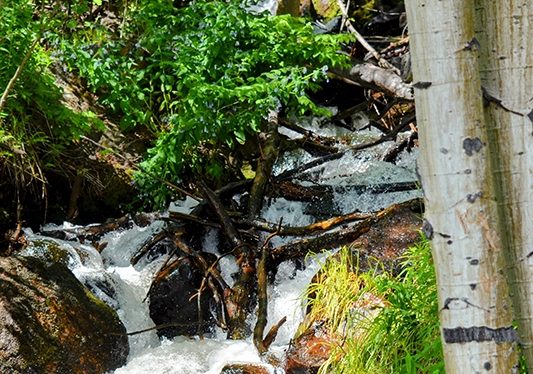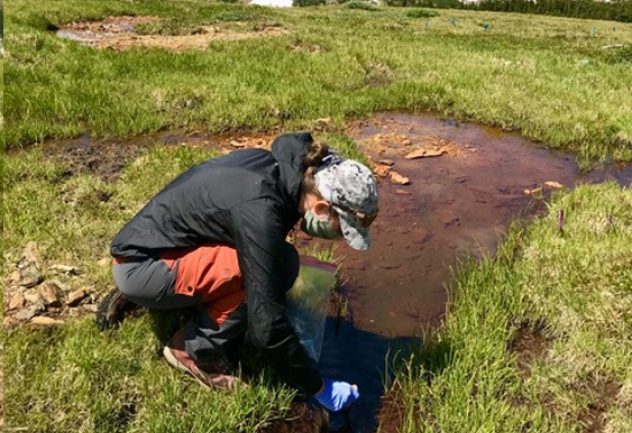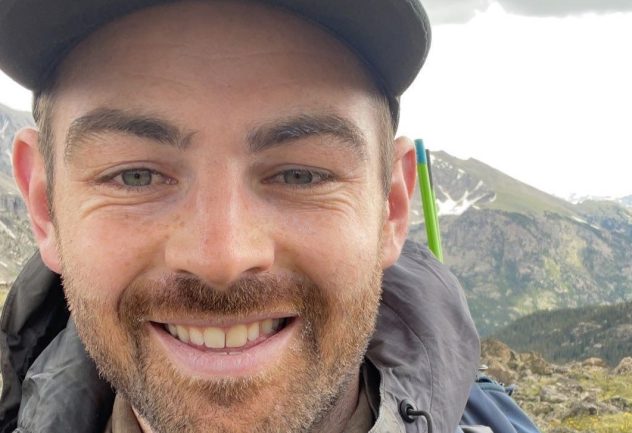FEATURED STUDENT WORK
Below you will find some featured student work

Beavers as Critical Zone Engineers
- Clifford Adamchak
- PhD in the Ecology and Evolutionary Biology Department at the University of Colorado, Boulder.
Beavers and their effects on carbon, sulfur, and mercury biogeochemistry.
I will investigate how the formation of beaver cascades (consecutive beaver dams in a river reach) change biogeochemical cycling of carbon, sulfur, and mercury through space and time. Through the pattern of dam building and abandonment, beavers increase landscape heterogeneity in the river corridor by creating various, differently aged, eco-geomorphic units with unique ecological and hydrological characteristics. Each unit acts as a distinct biogeochemical control point where oxidation and reduction processes occur. Importantly, I will focus on how beaver dams affect rates of sulfate reduction, which plays an important role in the formation of methylmercury, a neurotoxin that can bioaccumulate and biomagnify in the food web. I will quantify where on the landscape and to what magnitude these process rates are taking place to better understand water quality in the CZ.

Vegetation and lithology controls over weathering and carbon dynamics
- Lena Chunmei Bixby
- Masters Student, Water Resources Sciences, Sullivan Hydrology Lab, Oregon State University
I am interested in how shifts in vegetation coverage may influence carbon dynamics in high elevation montane environments. To think about carbon dynamics, I investigate
- Weathering and soil formation
- Lability and transport of carbon

Drivers of coarse particulate organic matter transport and storage in headwater streams
- Caleb Fogel
- Master’s in Geography, University of Colorado - Boulder
Coarse particulate organic matter (CPOM) provides a significant energy source to aquatic ecosystems, and is a major component of watershed carbon cycling and export. CPOM transport [KL1] redistributes organic matter and exports carbon from areas of high inputs. CPOM stored in rivers becomes available to aquatic organisms as a major food source, thereby boosting energy levels and ecosystem health. I am investigating the impacts of in-channel retentive features, such as coarse sediment and wood pieces (particularly smaller wood pieces), and hydrologic conditions, on CPOM transport and storage in two headwater streams in the Colorado Front Range: Gordon Gulch and Como Creek.

Improving predictions of summer flow using groundwater dynamics
- Keira Johnson
- Seeking PhD in Water Resources at Oregon State University
Interested in changing groundwater – surface water interactions under warming
Summer streamflow predictions are critical for managing water resource allocations, however warming-induced shifts from snow to rain regimes impact the accuracy of low flow predictive models. This research seeks to improve low flow prediction in a changing climate by building on the current framework of using snow parameters for flow prediction. We introduce a new metric that accounts for shoulder season groundwater inputs and found that this metric is a strong predictor of low flow across three diverse western US sites, and drastically improves low flow prediction at a rain-dominated watershed.

Biogeochemical cycling under changing snowmelt conditions
- Abby Knapp
- PhD Student in Environmental Engineering and Biogeochemistry at Penn State University.
I'm investigating how a warming climate will impact nutrient cycling through shifts in when and where dissolved organic carbon is produced and consumed in the watershed. My primary tools are reactive transport models, which integrate hydrologic flow and chemical reactions along different flow paths in the soil and groundwater.

Climate change affects water quantity and quality in mountainous watersheds.
- Devon Kerins
- PhD Candidate in Environmental Engineering and Biogeochemistry at Penn State University.
Their research is currently focused on understanding how climate change affects water quantity and quality in mountainous watersheds. Specifically, Devon is using a watershed-scale reactive transport model to study the interactions between water flow, biogeochemical processes, watershed structure, and external forcings to understand how they drive stream carbon levels."

The effect of storage capacity on evapotranspiration
Plant accessible water storage capacity is foundational to the amount of precipitation plants receive, yet this storage capacity is both uncertain and spatially variable. Describing the effect of uncertainty and variability across sites is normally computationally costly and complex to summarize. We developed a method that can efficiently describe the effect of all plant accessible water storage capacities on evapotranspiration in a single model run. In doing so, we untangle the complex non-linear interactions among climate, storage capacity, and evapotranspiration.

Mercury Cycling in Western U.S. Mountain Ecosystems
- Hannah Miller
- PhD Candidate, University of Colorado, Boulder
I am a biogeochemist with an interest in the interactions between aquatic and terrestrial ecosystems. I am especially interested in how climate change and human disturbances are impacting those processes, especially in remote regions of the world. For my dissertation, I am investigating mercury cycling in mountain ecosystems of the Western U.S. to better understand the role of high elevation regions in global mercury storage and transformation.

Geomorphology, carbon storage, and sedimentation rates in beaver mediated river systems.
- James (Huck) Rees
- Master’s in Geography, University of Colorado, Boulder
Huck is a masters student examining geomorphology and organic carbon storage within beaver-mediated river systems in the southern Rocky Mountains. He did his undergraduate at the University of California, Davis, where he conducted research on flood risk management and policy in the US Midwest, and was part of several floodplain and meadow restoration projects. Prior to joining the Critical Zone Project, Huck worked for the UC Davis Center for Watershed Science and in water resources consulting.

Climate change impacts on headwater stream quantity and quality
- Sara Warix
- Hydrology PhD Candidate at the Colorado School of Mines
Conceptual figure showing hypothesized response to future decreased SWE in two different geomorphology scenarios. In steep areas where groundwater is young, we hypothesize a groundwater table drop that causes stream drying. In areas with shallow slopes, older groundwater and alluvial storage enable a longer buffer period to perturbations.

